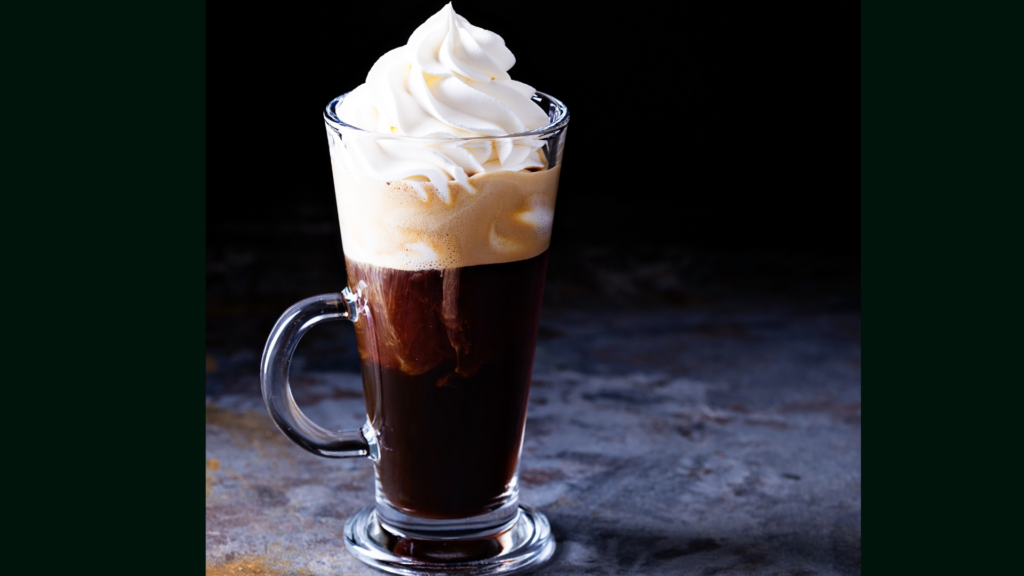For many coffee lovers, adding creamer is an essential part of their morning routine. But, determining the right amount of creamer to add can be a bit of a guessing game. Too much creamer can mask the flavor of the coffee, while too little can leave it tasting bitter.
It’s important to understand what types are available, and the benefits and potential health risks associated with using them. You may even find some alternatives that will give you a delicious cup without all the added sugar from creamers. Join us as we explore this topic – “much creamer should you put in coffee” – to get more insight into making sure every sip is just right!

Table of Contents:
- Types of Creamer
- Dairy Creamers
- Non-dairy Creamers
- Powdered creamers
- Amount of Creamer to Use
- Single Serving Coffee Makers
- French Presses and Pour Overs
- Espresso coffee
- How Can I Make Homemade Coffee Creamer?
- Benefits of Adding Creamer to Coffee
- Potential Health Risks of Adding Too Much Creamer to Coffee
- High-Calorie Intake
- Increase in Cholesterol Levels
- Increased risk for diabetes and heart diseas
- Alternatives to Using Creamer in Coffee
- Milk alternatives
- Nutpods
- Coconut oil
- Cinnamon
- Whipped cream
- FAQs in Relation to How Much Creamer Should You Put in Coffee
- How much liquid creamer to put in coffee?
- How much creamer is enough?
- How much creamer is a serving?
- How do you add creamer to coffee?
- Can you freeze coffee creamer?
- Can I microwave coffee creamer?
- Conclusion
Types of Creamer
Dairy Creamers
Dairy Creamers are the most common creamer used in coffee. They come in a variety of flavors, such as vanilla, hazelnut, and caramel. Dairy creamers contain milk or cream that has been homogenized and pasteurized to create a creamy texture when added to hot beverages.
The advantage of using dairy creamers is that they provide an extra boost of calcium and protein while adding flavor to your cup of joe. However, some people may find them too heavy for their taste buds or have difficulty digesting lactose found in dairy products.
Non-dairy Creamers
Non-dairy creamer or dairy-free coffee creamer is a plant-based alternative to traditional dairy creamers made from coconut oil, soybeans, almonds, cashews, and other nuts or seeds. These non-dairy options offer a creamy texture without the use of animal products making them suitable for vegans and those with lactose intolerance issues.
Non-dairy creamers can also be lower in calories than regular dairy varieties but still provide great flavor when added to coffee drinks. Thats why it is the healthiest coffee creamer than others. Here are some low calory options you may looking for; skim milk, soy milk and evaporated etc.
Powdered creamers
Powdered coffee creamers are a type of creamer that is typically used as a substitute for traditional liquid creamers. They are made from a combination of water, sugar, and vegetable oil, along with various additives such as flavorings, emulsifiers, and stabilizers.
However, some people may prefer liquid creamers for their taste and texture, as powdered creamers can have a slightly artificial or powdery taste. Among the products in the market, coconut powdered coffee creamer made with coconut milk powder is most popular.
Creamers come in a variety of types, ranging from dairy and non-dairy creamers to powdered options. To get the perfect cup of coffee, it’s important to know how much creamer to use for each type of coffee maker. Let’s explore this further in the next section.
Amount of Creamer to Use

When it comes to adding creamer to coffee, the amount you use will depend on the type of coffee maker you’re using. Single-serving machines are typically designed for one cup of coffee and usually require only a small amount of creamer.
French presses and pour-overs can make multiple cups at once, so more creamer may be needed depending on how many cups you’re making. Espresso machines also require less creamer than other types of makers since espresso is much stronger in flavor than regular drip-brewed coffee.
Single Serving Coffee Makers
When using single-serving machines such as Keurig or Nespresso, a teaspoon or two should suffice when adding creamers like half-and-half or almond milk. If your machine has an adjustable strength setting, then adjust accordingly if you want a stronger flavored cup of joe with more creaminess added in.
French Presses and Pour Overs
For French presses and pour overs that make multiple servings at once, start by adding about 2 tablespoons per 8 ounces (1 cup) of water used for brewing the grounds. This should give your brew enough flavor without overpowering it with too much creaminess from the added liquid ingredients like half-and-half or coconut milk.
If desired, add more after tasting to get just the right balance between strong flavor and creamy texture that suits your taste buds best.
Espresso coffee
Since espresso is already quite intense in its own right due to its higher concentration levels compared to regular brewed coffees, very little additional liquid ingredients are necessary when making espressos with an espresso machine at home – usually no more than 1 tablespoon per shot (2 ounces).
Adding too much could result in a bitter-tasting beverage that lacks depth and complexity; not ideal for those looking for maximum enjoyment out of their morning pick me up.
The amount of creamer you use in your coffee depends on the type of brewer and your own taste preferences. While it may be tempting to add a lot, too much can overpower the flavor of the coffee itself. Now let’s look at some benefits of adding creamer to coffee.
How Can I Make Homemade Coffee Creamer?

Making coffee creamer at home is easy and requires just a few ingredients. Here’s a simple recipe you can try:
Ingredients:
- 1 can (14 oz) sweetened condensed milk
- 1 1/2 cups whole milk or heavy cream
- 1-2 teaspoons vanilla extract (optional)
Instructions:
- In a mixing bowl, whisk together the sweetened condensed milk and whole milk (or heavy cream) until well combined.
- Add the vanilla extract and whisk again until combined (if desired).
- Pour the mixture into a jar or container with a lid.
- Store the coffee creamer in the refrigerator for up to 2 weeks.
- Shake the jar before each use to ensure the ingredients are well combined.
You can also customize the recipe by adding different flavors like caramel, hazelnut, or peppermint extract. Just add the flavorings in step 2 along with the vanilla extract. Enjoy your coffee and other drinks!
Benefits of Adding Creamer to Coffee
Adding creamer to coffee can be a great way to enhance its taste and flavor. Creamer adds sweetness, creaminess, and richness that can make your cup of joe even more enjoyable. It also helps balance out the acidity of some coffees, making them smoother and easier to drink coffee creamer.
Additionally, adding creamer can increase the nutritional value of your coffee by providing essential vitamins and minerals such as calcium or vitamin D.
When it comes to texture and consistency, adding creamer makes for a much smoother cup of coffee than just using regular milk or water alone. The creaminess from the added creamer helps create an overall better drinking experience with each sip being more enjoyable than before. This is especially true when using flavored creamers which add their own unique flavors that compliment the underlying notes in many different types of coffees perfectly.
Overall, adding creamer to your morning cup of joe can be a great way to take it up a notch in terms of both taste and nutrition. It is simple enough for anyone who enjoys their daily dose of caffeine without having to worry about complicated recipes or techniques required for other methods like espresso machines or French presses.
Adding creamer to coffee can be a great way to enhance its flavor, increase its nutritional value and improve the texture. However, it is important to keep in mind that too much creamer can lead to health risks such as high calorie intake and increased cholesterol levels.
Potential Health Risks of Adding Too Much Creamer to Coffee

High-Calorie Intake
Adding too much creamer to your coffee can significantly increase the calorie count of your drink. Coffee creamers are usually made with a combination of milk, cream, sugar and other ingredients that add calories to your cup. For example, a tablespoon of regular dairy creamer contains about 35 calories while a tablespoon of non-dairy creamer contains about 25 calories.
If you’re trying to watch your weight or maintain a healthy diet, it’s important to be mindful of how much creamer you use in each cup.
Increase in Cholesterol Levels
Consuming too much fat from coffee creamers can also lead to an increase in cholesterol levels. Dairy creamers are high in saturated fats which can raise bad cholesterol (LDL) levels and contribute to heart disease if consumed regularly over time.
Non-dairy creamers may contain fewer saturated fats but they often contain trans fats which have been linked to higher LDL levels as well as increased risk for stroke and heart attack.
Increased risk for diabetes and heart disease
Overconsumption of added sugars found in many coffee creamers has also been associated with an increased risk for diabetes and heart disease due to its effect on blood glucose levels when consumed regularly over time.
Additionally, consuming large amounts of processed foods such as those found in most store bought creamers has been linked with inflammation which is thought by some researchers to be one cause behind chronic diseases like diabetes and heart disease.
It’s important to be mindful of the potential health risks associated with adding too much creamer to your coffee. With that in mind, let’s look at some alternatives for flavoring and sweetening your cup of joe.
Alternatives to Using Creamer in Coffee
Creamer is a popular coffee additive that many people use to add flavor and texture to their morning brew. However, if you are lactose intolerant, vegan, or simply looking to reduce your calorie intake, you may be wondering if there are alternatives to using creamer in your coffee. The good news is that there are plenty of options available, and we’ve compiled a list of some of the most popular alternatives to creamer below.
Milk alternatives
If you’re looking for a dairy-free alternative to creamer, there are plenty of options available. Almond milk, soy milk, oat milk, and coconut milk are all great alternatives that can add a creamy texture and mild flavor to your coffee.
Nutpods
Nutpods are a popular creamer alternative made from a blend of almond milk and coconut cream. They are dairy-free, sugar-free, and come in a variety of flavors, including vanilla, hazelnut, and caramel.
Coconut oil
Adding a teaspoon of coconut oil to your coffee can give it a creamy texture and a hint of coconut flavor. Be sure to blend it thoroughly for best results.
Cinnamon
Adding a dash of cinnamon to your coffee can give it a warm, spicy flavor without adding any calories or sugar. This is a great option if you’re looking to add some flavor to your coffee without adding any extra ingredients.
Whipped cream
If you’re looking for a decadent treat, whipped cream can be a delicious addition to your coffee. However, it is important to note that whipped cream is high in calories and should be consumed in moderation.
FAQs in Relation to How Much Creamer Should You Put in Coffee
How much liquid creamer to put in coffee?
The amount of liquid creamer to put in coffee depends on individual preference. Generally, a teaspoon or two is enough for a cup of coffee.
However, if you like your coffee creamier and sweeter, then adding more liquid creamer may be necessary. You need to remember that too much creamer can make the coffee taste overly sweet and overpower the flavor of the beans. Experiment with different amounts until you find what works best for you.
How much coffee creamer is enough?
Generally, a teaspoon or two is enough to give the desired flavor and texture. However, if you like a creamier cup of joe, feel free to add more until it’s just right for you. Experiment with different amounts and find what works best for your taste buds.
How much creamer is a serving?
A serving of creamer is typically 1 tablespoon (15 ml). This amount can vary depending on the type and brand of creamer you are using. For example, some coffee creamers may have a higher fat content than others, so they will require more to achieve the same level of sweetness or richness.
It’s important to read the label and adjust accordingly. Additionally, if you’re looking for a lighter flavor or fewer calories, you can reduce the amount of creamer used per serving.
How do you add creamer to coffee?
Adding creamer to coffee is a simple process. First, pour your desired amount of creamer into the cup or mug. Then, slowly add hot coffee until you reach the desired strength and flavor. Stir well to ensure that all ingredients are evenly distributed throughout the drink.
Finally, enjoy your creamy cup of joe. If you prefer a stronger flavor or creamier texture, simply adjust the ratio of creamer to coffee accordingly. With a few easy steps, you can have an enjoyable and delicious cup of coffee with added creamer in no time.
Can you freeze coffee creamer?
Yes. You can store coffee creamer on your freeze. Freezing coffee creamer can be a convenient way to extend its shelf life and make sure you always have some on hand. However, it’s important to keep in mind that the texture and consistency of the creamer may change after it’s been frozen.
When you freeze creamer, the water in the creamer can expand and cause the creamer to separate or become grainy when it thaws. To prevent this from happening, it’s important to thaw the creamer slowly in the refrigerator. Avoid thawing the creamer at room temperature or in the microwave, as this can cause the texture to become even more uneven.
It’s also important to note that freezing creamer can impact the flavor. Some people find that frozen and thawed creamer has a slightly different taste compared to fresh creamer. For this reason, it’s a good idea to label the container with the date it was frozen, so you can keep track of how long it has been in the freezer. You can find liquid coffee creamer in the market that you can store in the refrigerator.
Can I microwave coffee creamer?
While it is possible to microwave coffee creamer, it’s generally not recommended. The high heat of the microwave can cause the creamer to separate or curdle, resulting in an unpleasant texture and taste. Additionally, microwaving creamer can be a safety hazard, as the creamer can boil over and cause burns.
Conclusion
It is important to understand the types of creamer available and how much should be used in coffee. Too much creamer can lead to health risks, so it’s best to use a moderate amount when adding creamer to your cup of joe.
If you’re looking for alternatives, consider using milk or almond milk instead. Ultimately, the decision on how much creamer should you put in coffee is up to you and depends on your personal preference.
Are you looking to make the perfect cup of coffee every time? Are you curious about how much creamer should be added for maximum flavor and enjoyment? At Hero-Coffee.com, we provide expert advice on all things related to coffee.
With our comprehensive guides and tips, you can easily learn everything there is to know about adding just the right amount of creamer in your daily brew! Join us today and get brewing like a pro!

